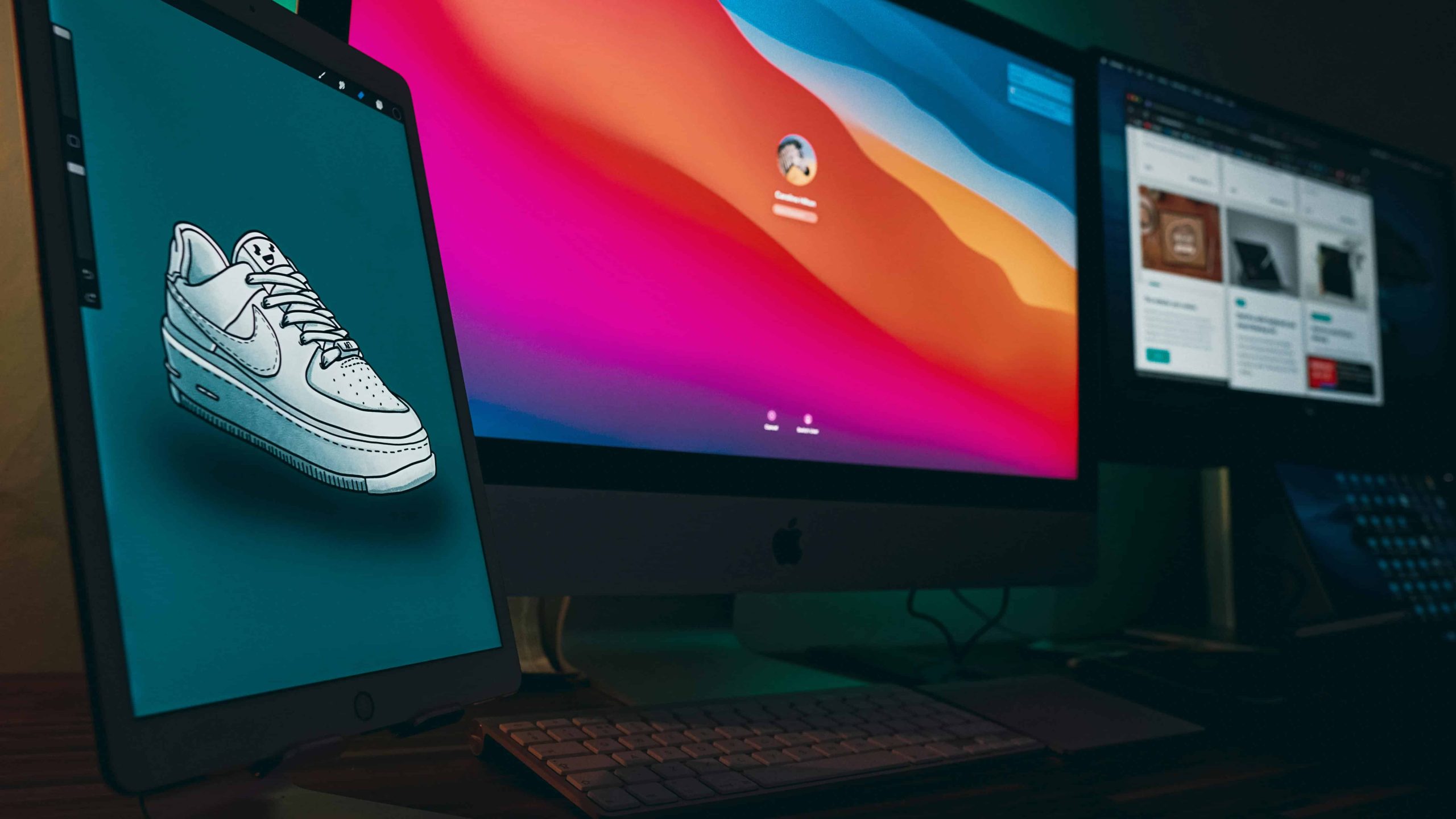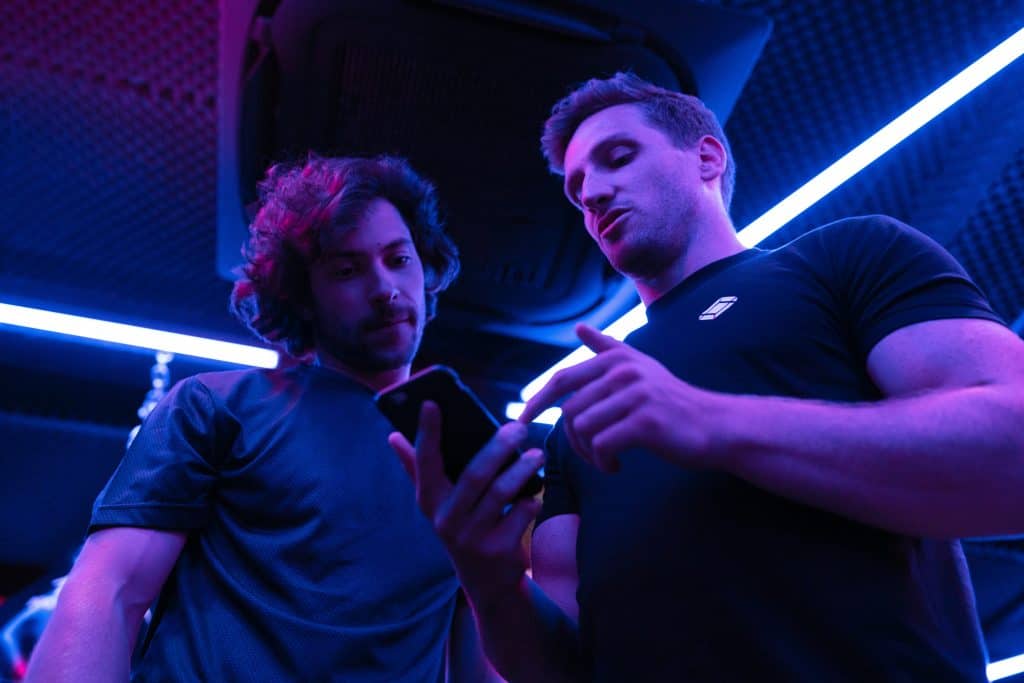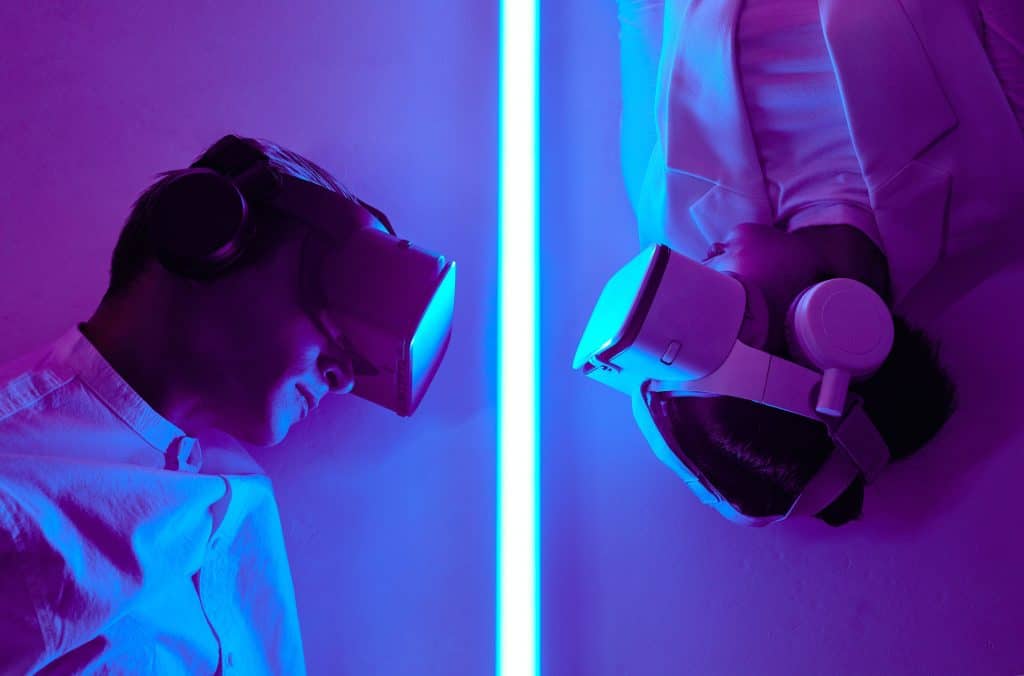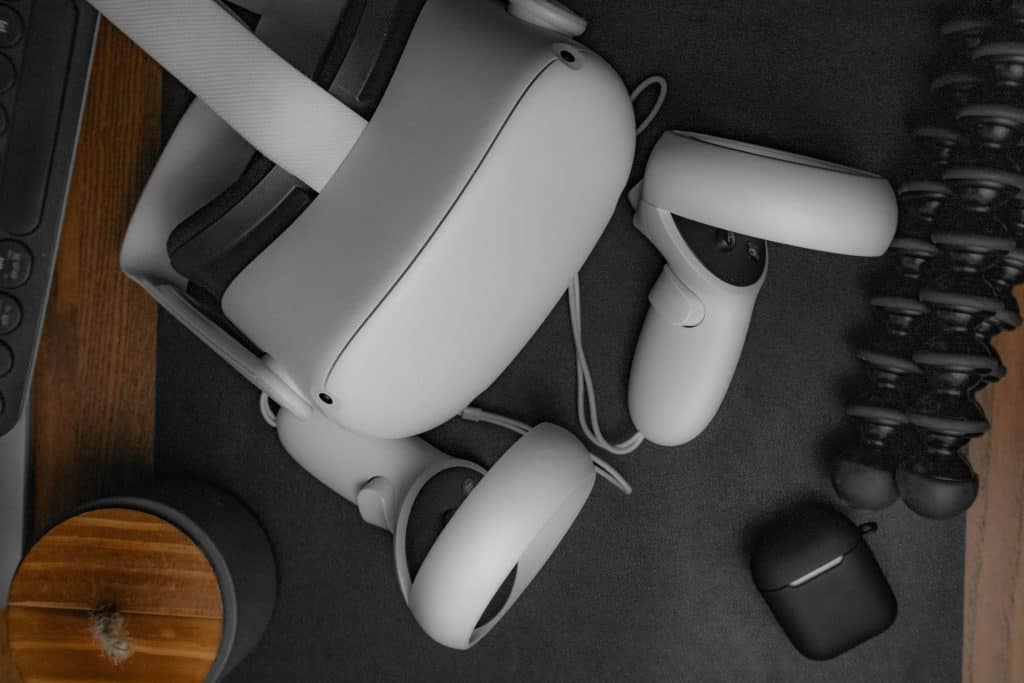
06 Mar Augmented Reality (AR) in Virtual Art Tours
Augmented reality (AR) stands as a transformative force, redefining the very essence of how we perceive and interact with artistic creations. Unlike its immersive counterpart, virtual reality (VR), which transports users entirely into synthetic realms, AR serves as a dynamic conduit between the tangible and the digital, seamlessly merging the two worlds into a singular, captivating experience. As traditional methods of engaging with art encounter constraints in terms of accessibility and interactivity, the burgeoning popularity of virtual art tours underscores the evolving dynamics of cultural consumption. In this exploration, we delve into the remarkable evolution of AR as a pioneering tool, poised to revolutionize the landscape of virtual art encounters and propel them towards unprecedented levels of immersion and engagement.
Augmented Reality Features in Virtual Art Tours

Photo by thisisengineering
Interactive Overlays from Augmented Reality
AR introduces interactive overlays that breathe life into static artworks. With the integration of augmented reality (AR), static artworks become enriched with additional layers of information, hidden details, and insights from the artist. This enhancement significantly augments the viewer’s understanding and appreciation of the artwork. By overlaying 3D models, animations, and sounds, AR transforms the art space into a dynamic and multisensory encounter. For instance, viewers can delve into the historical context behind a painting or explore the techniques used by the artist through interactive annotations. Moreover, engaging features such as scavenger hunts or quizzes within virtual galleries add an element of gamification, making art exploration a captivating and enjoyable experience for audiences of all ages.
Environmental Manipulation
One of the most groundbreaking aspects of AR in art is its ability to manipulate the environment during virtual art tours. AR technology adjusts lighting, shadows, and atmospheric effects in real-time to match the mood and tone of the artwork, creating an immersive ambiance for viewers. Additionally, virtual sculptures or installations can be seamlessly projected onto real-world surfaces, blurring the boundaries between reality and imagination. This integration allows viewers to experience artworks in novel ways, as historical contexts or alternate perspectives on artworks can be simulated, providing viewers with a unique lens through which to perceive art. Through environmental manipulation, AR redefines the traditional art viewing experience, offering viewers a journey into the realms of creativity and imagination.
Personalized Experiences
AR technology revolutionizes art encounters by tailoring experiences to individual preferences and interests. Viewers have the opportunity to immerse themselves in custom AR narratives curated based on their tastes, allowing for a more personalized and engaging exploration of art. Direct interaction with virtual pieces becomes possible, enabling viewers to establish a deeper connection with the artwork and its underlying concepts. Furthermore, AR facilitates virtual collaborations, bringing together art enthusiasts from diverse backgrounds in shared spaces and fostering a sense of community and collaboration. Whether it’s through collaborative art projects or personalized tours, AR transforms the way audiences engage with art, making it more accessible, interactive, and enriching for everyone involved.
Advantages of Using AR in Virtual Art Tours

Photo by Michelangelo Buonarroti
Increased Engagement and Interactivity
Augmented Reality (AR) has the remarkable ability to convert passive observation into active participation, thereby amplifying engagement with art. By overlaying digital elements onto the physical world, AR prompts viewers to interact with artworks in novel and immersive ways, fostering a deeper connection and understanding.
More In-Depth Understanding
Through the use of AR, viewers are provided with unique insights into artistic concepts and historical contexts, thereby enriching their understanding and appreciation of the artwork. By overlaying contextual information, such as artist biographies, historical significance, and artistic techniques, AR enhances the viewer’s comprehension and enriches their overall experience.
Improved Accessibility
Augmented Reality technology transcends physical limitations, making art more accessible to individuals with disabilities or constraints. By offering alternative modes of engagement, such as audio descriptions, tactile feedback, and customizable interfaces, AR ensures that art becomes inclusive and available to a broader audience, regardless of their physical abilities.
Broader Audience Reach
Virtual art tours powered by AR technology have the potential to overcome geographical barriers, enabling artworks to be experienced and appreciated by a global audience. By offering virtual exhibitions and immersive experiences accessible from anywhere in the world, AR expands the reach of art institutions and democratizes cultural participation on a global scale.
Potential for Gamification and Education
Augmented Reality introduces gamification elements into art exploration, transforming the viewing experience into an entertaining and educational endeavor. By incorporating interactive challenges, quizzes, and storytelling elements, AR turns art appreciation into a dynamic and engaging activity, appealing to both casual audiences and educational institutions seeking innovative ways to teach art history and aesthetics.
Challenges and Future Developments

Photo by Tobias Bjerknes
Technical Limitations
Advancements in augmented reality (AR) technology are often hindered by existing technical limitations. These limitations encompass various aspects such as hardware capabilities, software development, and integration challenges. For instance, AR devices may have constraints in terms of processing power, battery life, or display resolution, which can impact the quality and functionality of AR-powered art experiences. Additionally, compatibility issues between different AR platforms and devices may pose obstacles to the widespread adoption and seamless deployment of AR artworks. Overcoming these technical barriers requires ongoing research, innovation, and collaboration across interdisciplinary fields to push the boundaries of AR technology and unlock its full potential for artistic expression.
Accessibility and Inclusivity
Ensuring accessibility and inclusivity in AR-powered art experiences is paramount to reaching diverse audiences and fostering equitable participation in cultural and creative endeavors. Accessibility considerations encompass various factors, including sensory, cognitive, and physical accessibility requirements, to accommodate individuals with diverse abilities and needs. This may involve implementing features such as adjustable text sizes, alternative navigation methods, audio descriptions, and tactile interfaces to enhance the usability and inclusivity of AR applications for all users. Moreover, addressing linguistic and cultural diversity through multilingual support and culturally sensitive content creation can further broaden the accessibility of AR-powered art to global audiences, promoting cross-cultural understanding and appreciation.
Copyright and Ownership Issues
The emergence of digital art in augmented reality raises complex legal challenges surrounding copyright and ownership rights in the digital realm. As AR technologies enable the creation, distribution, and display of virtual artworks in physical spaces, questions arise regarding the legal status and protection of these digital assets. Issues such as authorship attribution, licensing agreements, intellectual property rights, and digital piracy require careful consideration and legal frameworks to safeguard the interests of artists, creators, and stakeholders in the AR ecosystem. Establishing clear guidelines, standards, and mechanisms for copyright enforcement and dispute resolution can help mitigate potential legal conflicts and ensure fair compensation and recognition for artists’ contributions to the digital art landscape.
Ethical Considerations
The virtual representation of art through augmented reality introduces a host of ethical considerations that warrant critical reflection and responsible stewardship of artistic practices and technologies. Ethical concerns may encompass issues such as cultural appropriation, misrepresentation, privacy infringements, and digital surveillance in AR-mediated environments. Artists, developers, and stakeholders must navigate these ethical dilemmas with integrity, transparency, and respect for diverse perspectives and values. This involves engaging in meaningful dialogue, consulting with affected communities, and adhering to ethical guidelines and codes of conduct that prioritize the ethical use and dissemination of AR-powered art while upholding fundamental principles of human dignity, autonomy, and justice. By integrating ethical considerations into the design, development, and deployment of AR applications, practitioners can promote ethical awareness and accountability in the evolving landscape of augmented reality art.

Photo by Arthur Edelmans
Conclusion
Augmented reality (AR) stands as a beacon of innovation, transforming the canvas of creativity and redefining how we perceive and interact with art. Through its interactive overlays, environmental manipulation, and personalized experiences, AR infuses virtual art encounters with unparalleled depth and dynamism. The advantages of employing AR in virtual art tours are manifold, fostering increased engagement and interactivity while offering viewers a more profound understanding of artistic concepts. Moreover, it breaks down accessibility barriers and broadens cultural participation on a global scale. The potential for gamification and education within AR-powered experiences opens new avenues for entertaining and enriching art exploration.
However, challenges persist, including technical limitations, accessibility concerns, copyright issues, and ethical considerations. Addressing these challenges will be crucial in harnessing the full potential of AR in virtual art tours while ensuring inclusivity, legality, and ethical integrity. As technology continues to evolve, so too will the possibilities for AR in the realm of virtual art tours. By navigating challenges and embracing opportunities, we can unlock new dimensions of creativity, connectivity, and cultural appreciation, ushering in a transformative era in the world of art. AR holds the promise of democratizing art, transcending boundaries, and inviting audiences worldwide to embark on immersive journeys of discovery and wonder.
Key Takeaways
AR Features in Virtual Art Tours
- Interactive Overlays: Enhance understanding with annotations, 3D models, and gamification elements.
- Environmental Manipulation: Create immersive atmospheres and simulate historical contexts.
- Personalized Experiences: Tailor art encounters and foster virtual collaborations.
Advantages of Using AR in Virtual Art Tours
- Increased Engagement and Interactivity: Transform passive observation into active participation.
- More In-Depth Understanding: Gain insights into artistic concepts and historical contexts.
- Improved Accessibility: Break physical barriers and broaden cultural participation.
- Broader Audience Reach: Overcome geographical constraints and reach a global audience.
- Potential for Gamification and Education: Make art exploration entertaining and educational.
Challenges and Future Developments
- Technical Limitations: Address current limitations in AR technology.
- Accessibility and Inclusivity: Ensure diverse audiences can engage with AR-powered art.
- Copyright and Ownership Issues: Manage legal concerns regarding digital art assets.
- Ethical Considerations: Address ethical concerns related to virtual art representation.
FAQs
Can I experience AR virtual art tours without special equipment?
Yes, indeed, you can delve into AR virtual art tours without the necessity for specialized equipment. Thanks to the accessibility of AR applications on smartphones and tablets, the requirement for distinct devices is eliminated. By simply using your smartphone or tablet, you can embark on immersive journeys through augmented reality art experiences, enriching your understanding and appreciation of art without additional gadgets or gear.
How is AR overcoming technical limitations in virtual art tours?
The advancement of AR technology is steadily overcoming technical limitations in virtual art tours. Through ongoing research and development endeavors, AR capabilities are continuously being refined and enhanced. Technical challenges such as tracking accuracy, ensuring that virtual elements align precisely with physical spaces, and rendering quality, ensuring that virtual art appears lifelike and immersive, are being addressed. As a result, the quality and realism of AR experiences in virtual art tours are progressively improving, offering users more immersive and engaging encounters with art.
Are there concerns about the digital ownership of AR-enhanced artworks?
Certainly, concerns regarding the digital ownership of AR-enhanced artworks abound within the art community and beyond. Navigating the complex landscape of copyright and ownership issues surrounding AR-enhanced artworks presents a considerable challenge. Collaboration among artists, platforms, legal experts, and other stakeholders is essential to address these concerns effectively. Establishing clear guidelines and frameworks for digital ownership rights in the context of AR art is crucial to ensuring fair compensation, recognition, and protection for artists and their creations in the digital realm.
How does AR contribute to a sense of community in virtual art spaces?
Augmented reality (AR) technology plays a pivotal role in cultivating a sense of community within virtual art spaces. By leveraging AR, individuals can engage in virtual collaborations, interact with fellow art enthusiasts, and share their experiences and perspectives in real-time. AR facilitates shared exploration and discussion of artworks, transcending physical barriers and fostering connections among diverse communities of art lovers. Through collaborative AR experiences, individuals can contribute to a vibrant and inclusive virtual art ecosystem, where creativity, dialogue, and community thrive.
Unlock the potential of art exhibitions with “Marketing Strategies for Art Exhibitions”, designed to captivate and attract a diverse audience, enriching the cultural experience and fostering broader engagement with the arts.

